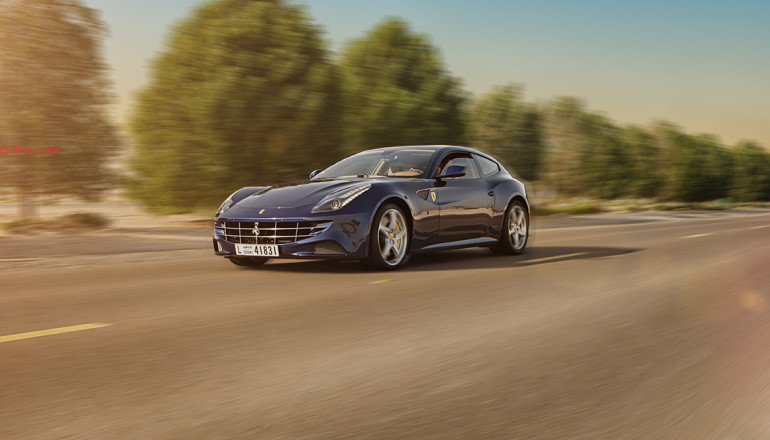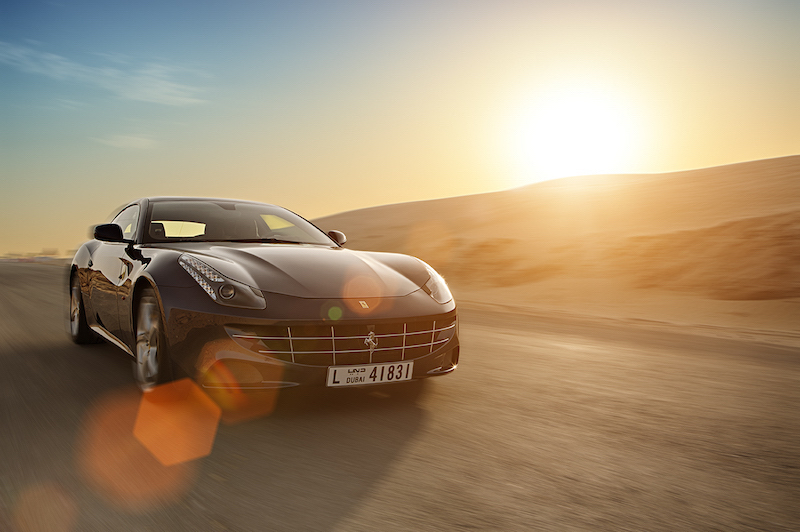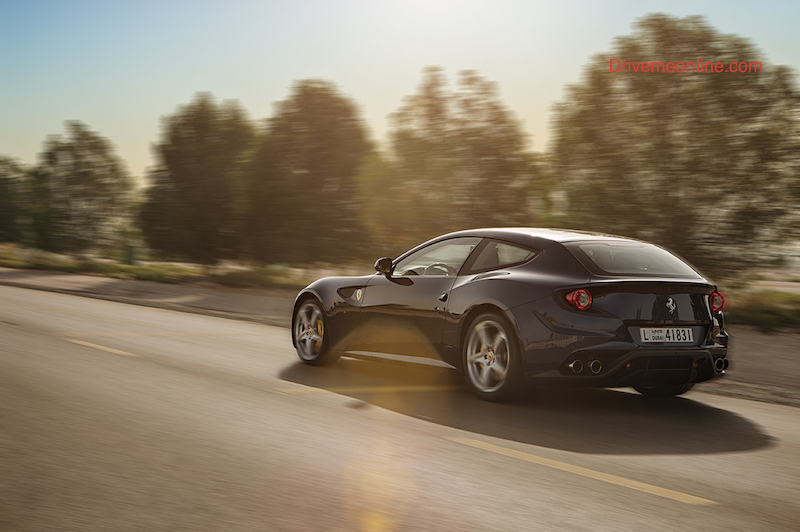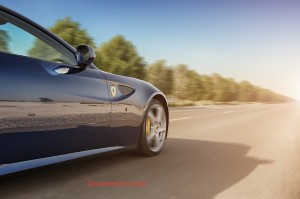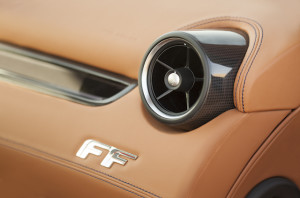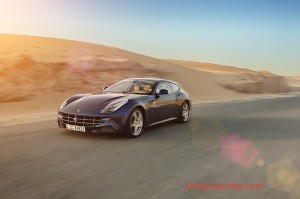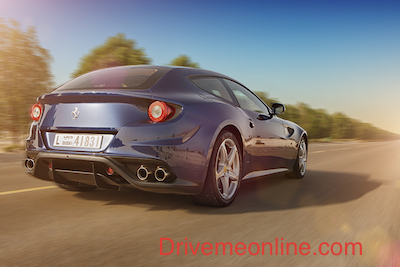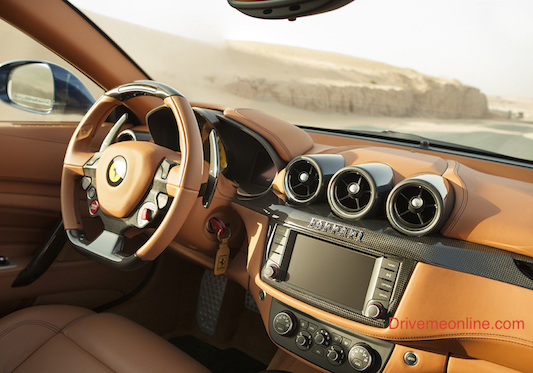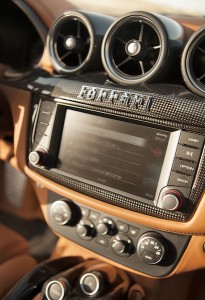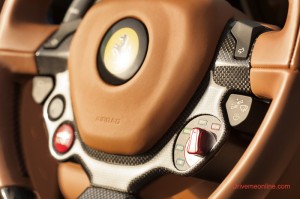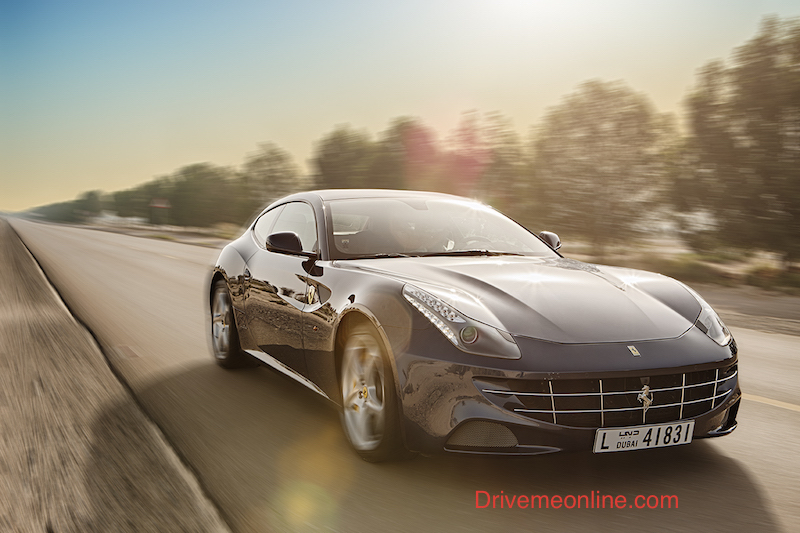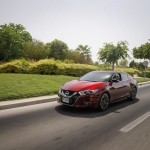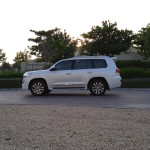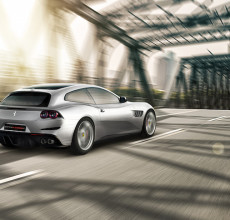FF, in Maranello speak, stands for Four Seat or Four Wheel Drive. To me, it simply stands for the Family Ferrari because this is the only Fezza which can actually make space for a family of four.
The Drive
The FF isn’t a meek family carrier. While many of the family carriers these days aren’t, this one is a Ferrari from down under – with the mesmerising power of 661bhp coming out of a twelve-cylinder engine. This is one of just two Ferraris today to flaunt a V12, the other one being the Berlinetta, the fastest Ferrari ever!
While the engine and its sheer power is awe-inspiring, what takes the trophy is the transmission and the steering. The seven-speed dual-clutch is a demo piece on how acute yet smooth a double-clutch transmission should be. Something else that makes the Ferrari FF awsome is the power delivery. It is a four-wheel drive that acts like a rear-wheel drive for the most part. Watch it cross an easy corner or slide along a casual bend; it pretty much throws itself into them like a RWD. But give it a sharp bend or a fast corner to tackle, and feel it fall on all-fours, stabilising itself amazingly.
That said, a couple of times at the U-turns, I could feel the tail throwing up a fuss back there. But the all-wheel drive takeover is so considerate that much of the RWD characteristics are retained, like a solid track car. On the other hand, this powerful trackster instils a rare confidence instead of overwhelming drivers – and I don’t mean racers. Imagine the capability of the GT-R with the rattle, the clunk and the rawness replaced with a boosted confidence coming from the the sheer tamability of the car. About the rattle and the clunk, well, that’s a different kind of fun.
The four wheel drive in the FF is different from that of a front wheel drive car. The first ever four wheel drive by Ferrari shares processors with the E-Diff and F1-Trac, estimating surface traction and supplying the front wheels with power just when the rear wheels go limp on a slippery road. The patented 4RM system transfers power to the front wheels using a dual-gear system, which is separate from the seven-speed transmission that feeds the rear wheels.
It is a heavily engineered car; one that doesn’t ever let you feel so. Switch off the electronic stability control, and take it for a spin – literally – and feel your prowess vying with the in-built dynamics of the car. It’s a Ferrari – a true natural. Much like its fluttering tenor – unlike many nice-sounding cars that have impressive sonic notes propped up their flute or forced down their throats, the Ferrari sounds just… natural! What emanates through the double dual exhaust: when you start off, when you switch to the Sport mode or when you push things up – the notes are somewhere between raw and refined. Without the pops and blasts that try hard to prove a point.
Even at speeds most cars are set to max out, the FF feels as though it is striding comfortably on all fours, and that’s when you notice you are still a long way off the top speed of 336 kmph. My easygoing take off marked 0-100 in 4.7 seconds while the launch control can get it right in a whole second less.
Family drive
It doesn’t have a point to prove: good for the family. The FF is relatively silent for a Ferrari. Children will love the sprawling glass canopy and of course, the Ferrari Red of my test car.
The long nose of this shooting-brake design takes up much of the sprawling car, but surprisingly, there is still space for reasonably long legs as well as long golf clubs. Compared with an Aston Martin Rapide S that is another stunner, people can actually sit comfortably in the rear. The FF has 450 L of boot space; folding up the back seats adds another 400.
Cabin and Controls
The Frau-aniline leather seats are purely class of Italia, and there is a lot of carbon fibre that nicely adorns the door grips, the dashboard inserts, the screen inserts and a good part of the steering wheel. A long, narrow strip screen right in front of the co-passenger honours the navigator by displaying the current speed and rpm levels. The trip meter and instrument panel keeps the info to a minimum, in which it is unlike a track car.
The only thing I wasn’t quite impressed with was the navigation which seemed to shuffle about, tripping on itself trying to find the way. The multiple-viewpoint camera of the FF is rather small but then does its job. The music system is suitably impressive – would you expect otherwise?
The essential Ferrari FF
The Ferrari drive spits convention out through the exhaust – the only gear I could see was the reverse gear; everything else was to be controlled using the paddles. I had the option of remaining in the Auto, or switching gear to manual command. There are wet track and driving-on-snow options as well as the choice of comfort settings in Sport mode in case you wish to shift from the Comfort mode itself – which is a good place to be anyway. From all sides, it’s a family Ferrari. And in terms of drivability, a true Ferrari. But then, the brand wouldn’t have bothered with a four-door, if it weren’t worth the prancing horse, would it?
Drive courtesy: Al Tayer Motors
The stunning pictures are by Orkun Orcan

